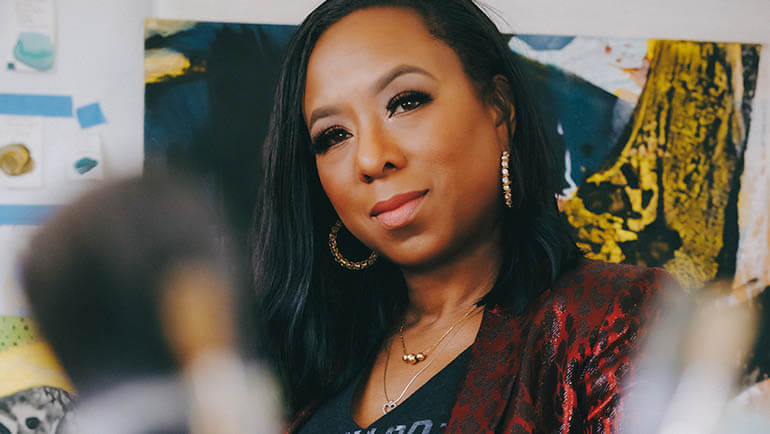
As a child, Anita Bates obsessed over art. Whether scrawling in crayon on a den wall her parents allowed her to use as a canvas or smearing finger paint all over the dining room table, she says that, even as little girl, art often was on her mind – and, occasionally, in her hair.
“I can recall being 5 years old and, after playing with crayons, discovering paint,” says Bates, assistant professor of teaching in the College of Education. “I think that really the visceral feeling of the paint, the way that the paint felt in my hands, kind of sparked my love for that. After that, I wanted to paint everything. I even took a bang in my hair — my mother always used to make a bang for me — and painted my bang red.”
Bates continues to paint prolifically, but these days, her work has gone from crayon scratches on den walls to massive, lush abstract expressionist paintings that grace the walls of respected galleries from Detroit to Europe. Bates’ work has been exhibited in venues that include the Charles H. Wright Museum of African American History; the Trout Museum in
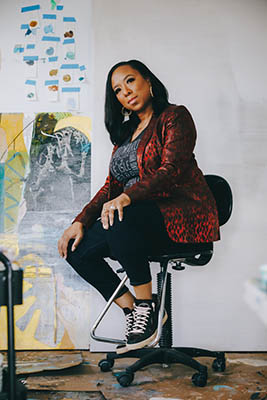
Appleton, Wisconsin; Dell Pryor Gallery; Detroit Artists Market; River’s Edge Gallery in Wyandotte, Michigan; Querini Stampalia Museum in Venice, Italy; A Gathering of the Tribes Gallery in New York City; and the Ashara Ekundayo Gallery in Oakland, California. Currently, a large collection of Bates’ work is on display at the popular N’namdi Center for Contemporary Art in Detroit; the exhibition set to run through the end of Black History Month.
Although Bates has displayed her work at the N’namdi gallery before, she’d never done one as large as the current exhibition. She admits that the offer came as a bit of surprise.
“Back in 2019, I was supposed to have a show at the N’namdi gallery, and gallery owner George N’namdi told me that they were going to start me off in what they call the ‘black box,’” recalls Bates. “The ‘black box’ is a smaller gallery space within the larger gallery. But a lot of things were happening in 2019, so we decided to push back the exhibit. When they called me earlier this year, I just assumed we’d be in the black box. I was like, ‘Okay, that's cool. I have enough paintings, enough large paintings.’ But they told me, ‘No, you're going to command the whole space.’”
As stunned as she was, Bates says she also recognized the enormous opportunity that came with having her work on display in one of the city’s top galleries for African and African American art.
“I'm always up for a challenge,” she says. “I knew that, like with anything in life, there are people who want to see why other people think you're so special. Everybody wants to show with George, so people want to see. I knew I had to bring my A game. I knew I had to be ready because people are going to talk about you regardless. But if I wasn't ready, they'd be like, ‘What is this? Oh, they gave her a show just because she’s friends with them.’ George doesn't operate like that, but I still wanted to make sure everything was on point.”
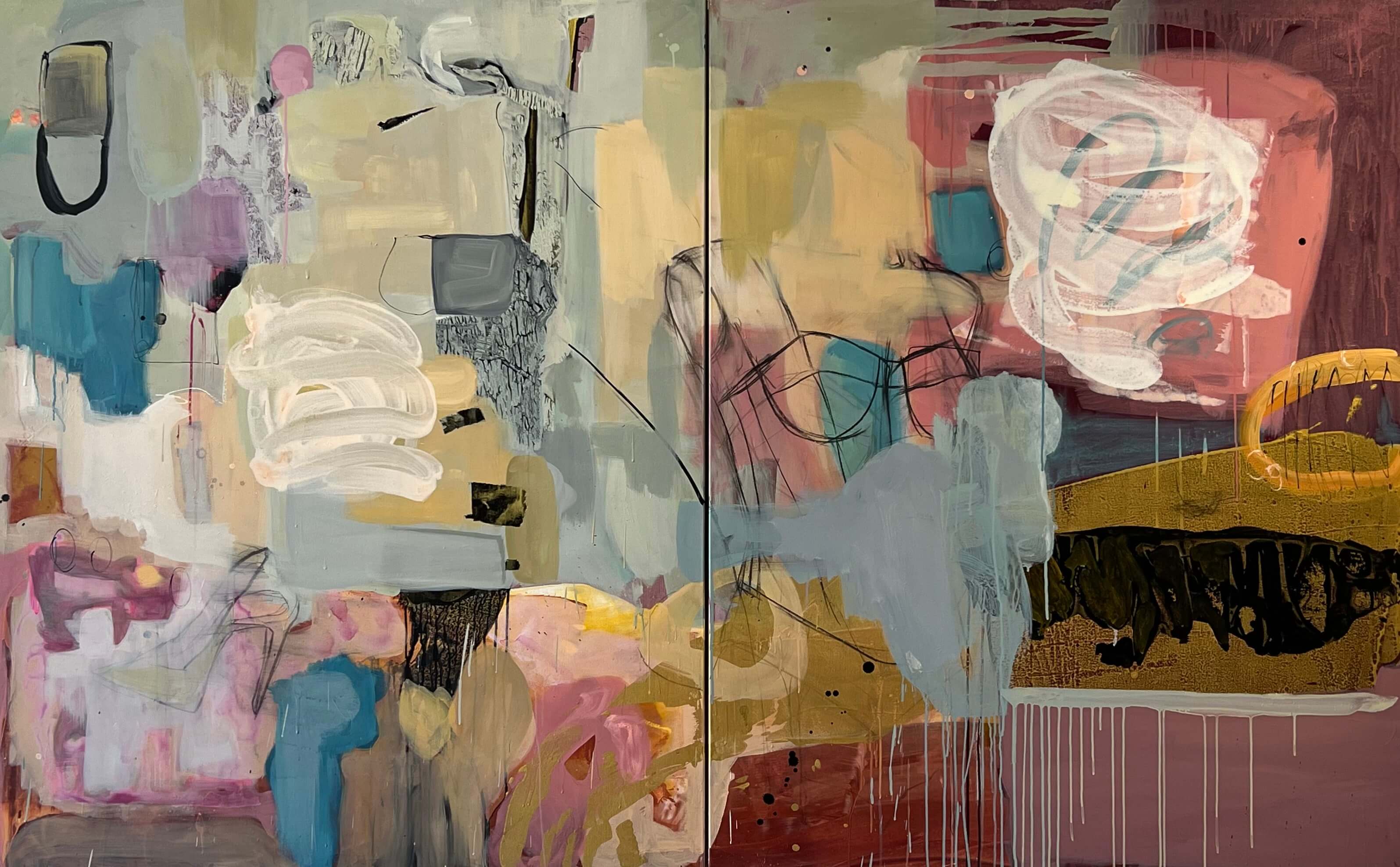
Bates had no doubt her work would impress gallery visitors. First off, the sheer size of her paintings demands attention, prone as she is to working on canvases as large 7’x14’. But viewers also notice the fullness of the colors and the masterful composition that dominate her work. As Bates explains it, she and her art strive “to debunk the myth that some people have that abstraction is just merely throwing paint on a surface. My work is very involved.”
Even so, Bates admits that she had opening night jitters when the 23-piece exhibit, “Long Time Coming,” premiered last year.
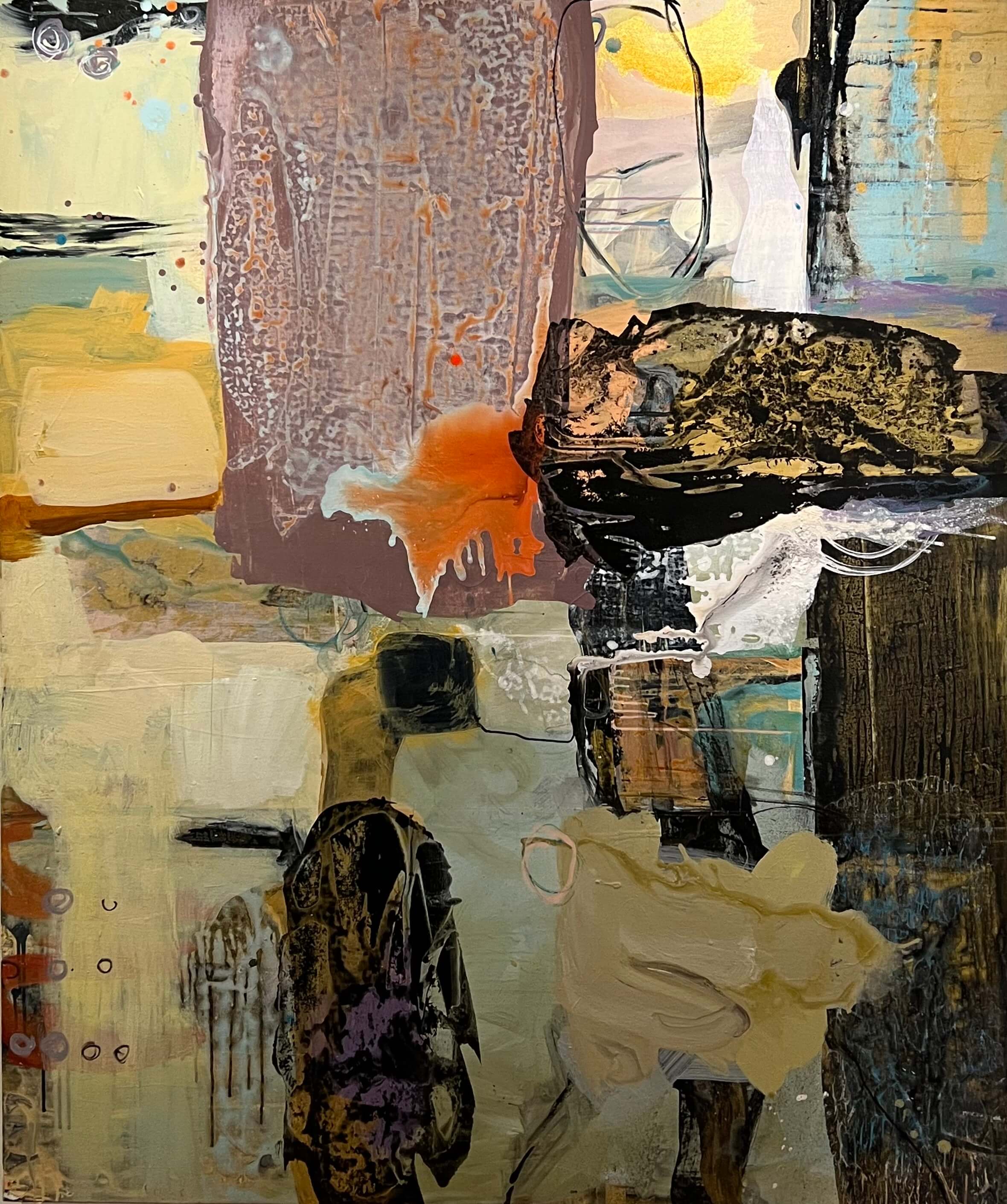
“Opening night, yeah, you always think about, Oh shoot, what if nobody comes? What if it's only five people there? What if I was my own worst enemy?”
Not only were her anxieties unjustified, but Bates says that the opening night “turned out to be a glorious evening. I looked up at one moment, and people were lined up at the door trying to get in. I was so happy!”
True to the title of the exhibit, the adulation Bates received had indeed been a long time coming. Born in Highland Park, Bates grew up in an assortment of nice neighborhoods in Detroit, including Green Acres and Sherwood Forest. Her family didn’t have a lot of money, she says, but her parents nonetheless managed to take Bates, her sister and her brother on weekly trips to museums, plays and restaurants.
“My first foray into making art was at this wonderful place on Ferry Street, which is now Bass Blue, but it used to be Love’s Heritage House Museum,” she recalls. “It was run by
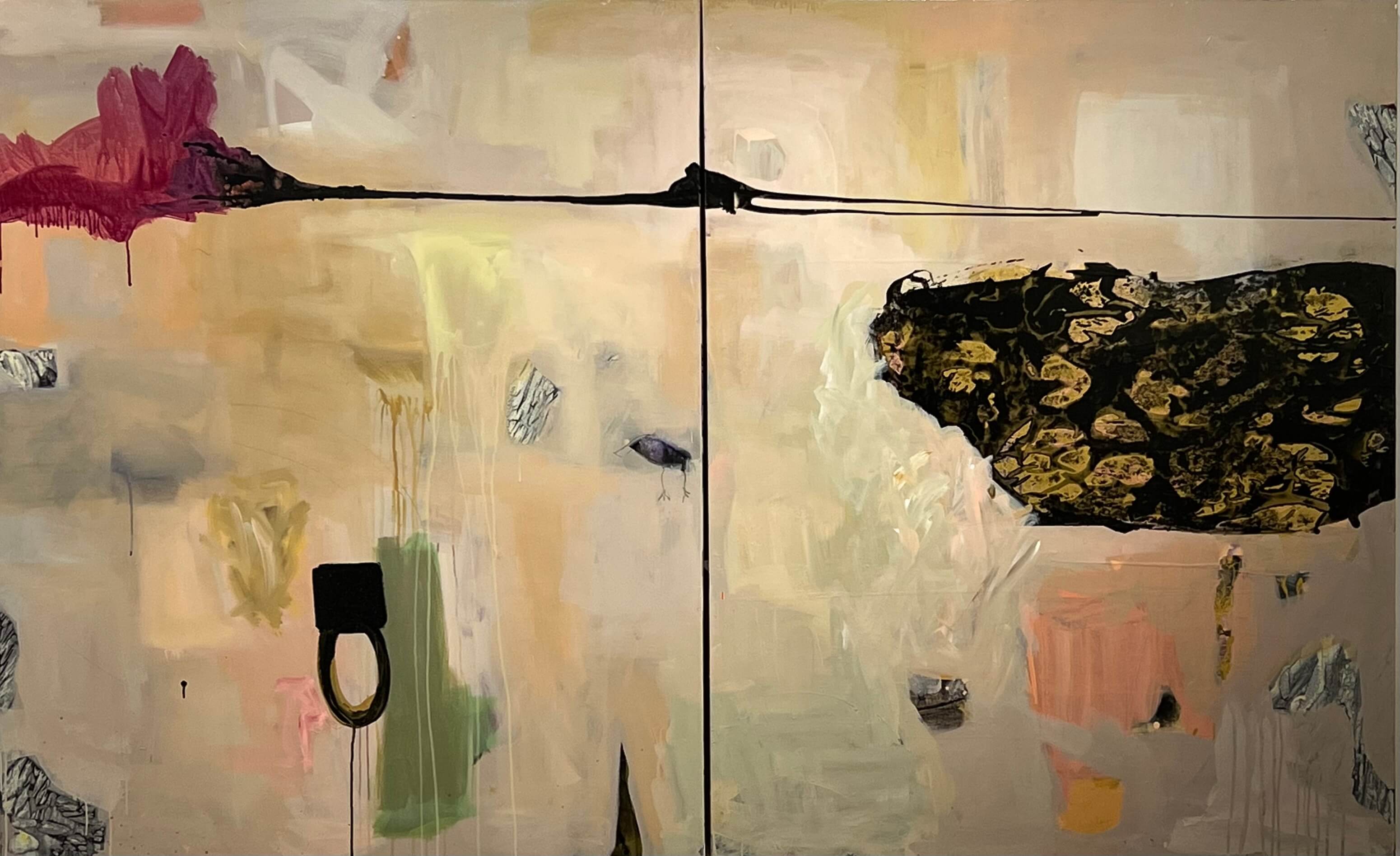
Josephine Love. And Josephine was probably, in addition to my mom, my first art teacher. A lot of artists who are in my age group, we all went through Josephine Love's Heritage House.”
Bates says she also spent summers in a Detroit Council of the Arts program where young people could study with professional artists, be they playwrights, visual artists or musicians. She and her siblings studied under iconic African American artists. “I think my brother went to study with Ron Milner's writing group. And my sister and I spent time with artists Allie McGhee and Harold Neal at their studio on Six Mile Road, across from Marygrove College. Allie really was instrumental in me experimenting with different media. When I had my first solo exhibition at a N’namdi years ago, Allie was the first person there, and he was the first person at the gallery.”
Having been shaped by legendary Detroit painters such as Neal and McGhee, Bates went on to receive a scholarship to the College for Creative Studies at age 17. She later earned an M.F.A. in painting and a Ph.D. in education from WSU, which occasionally prompt her to refer to herself as “a Wayne State baby.” In addition, she completed a master’s in Studio Art from Eastern Michigan University and won both a Fulbright Memorial Fellowship in Japanese education and a King, Chavez, Parks Future Faculty Fellowship from Wayne State University.
Bates also spent several years teaching K-12 education before becoming a university professor. Teaching, she says, has always been bound up in her artistic dreams. As a professor and researcher at WSU, Bates’ professional focus centers on the ways in which museum narratives and visual imagery can be used to promote critical thinking regarding systems of inequity and representation. But she also seeks, simply, to inspire.
“I loved teaching people how to make art,” Bates says. “When I started teaching, I always thought, think of myself as an artist first and then the teacher. But when I started teaching, it was I was fresh out, I was just finishing my M.F.A. and the opportunity to work at this school came up at University Public School. And I was so excited because I was like, I'm going to teach these young kids art. This was in ’97. Recently, my husband and I were out at a restaurant downtown, and I had somebody come up to me and say, ‘Ms. Bates, Ms. Bates!’ She said, ‘I never considered myself an artist, but you changed my life.’’’
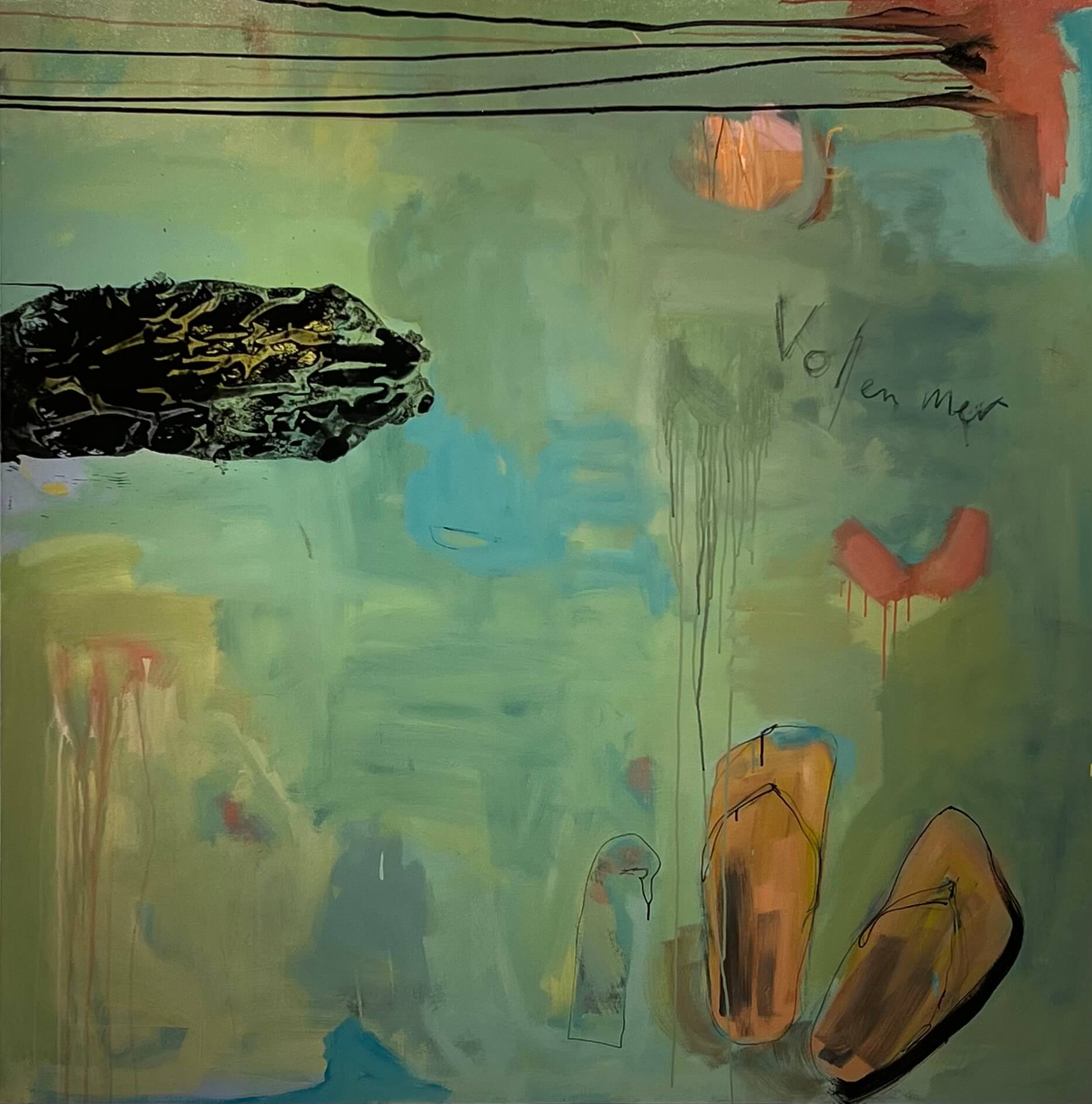
Bates, who, along with her husband, calls Highland Park home, says such encounters happen frequently. And not unlike the visceral excitement she received as a child from feel of the artist’s paint, Bates says she’s thrilled by the idea of stoking students’ potential. Both, after all, hold the promise of abundant, untapped creativity.
“I always see my students and they say the same thing because we're from this industrial city,” she says. “Art for Black kids — being an artist, participating in that — was not always something that somebody held on a pedestal. When we show students that it doesn't matter if you're going to be an artist or not, that you will have an appreciation for the arts and find some aspect of your life in which you can be creative, I think that's a win. I think that that's a wonderful thing. That is why I do it.”
